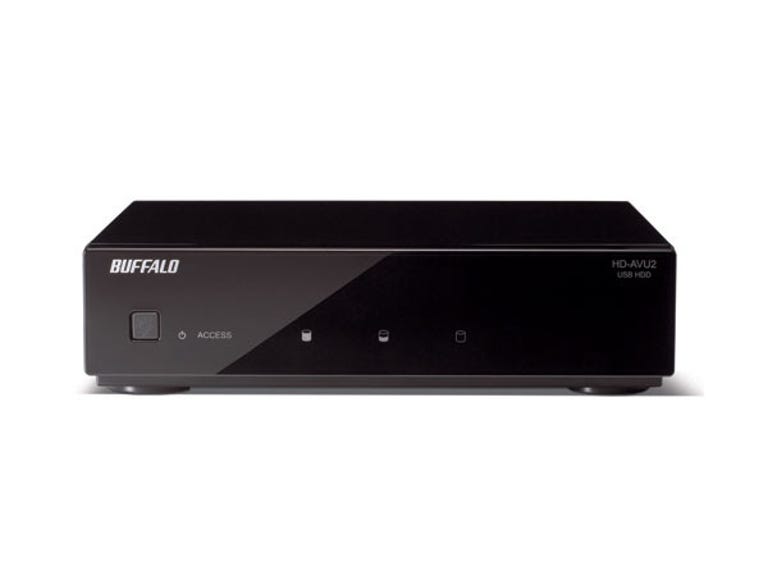 Why You Can Trust CNET
Why You Can Trust CNET Buffalo Drive Station AV (1TB) review: Buffalo Drive Station AV (1TB)
Buffalo's Drive Station AV is an external drive, no more, no less. But it is shiny and has lights — if this is enough to win you over, then you know where to go.
The Drive Station AV is dubiously advertised on its box as being an accessory for your PS3, by pure virtue of it being a USB desktop drive.
The Good
The Bad
The Bottom Line
Misleading marketing aside, it's a glossy black, boxy external drive that comes in 1TB, 1.5TB and 2TB capacities, with a USB 2.0 connection on the back. There are capacity lights along the front, and a button that sets the brightness of these lights to four different levels.
The choice of USB 2.0 means performance is quite limited, offering around 19.5MBps-sustained writes and 32MBps-sustained reads — and that's about it, as far as the hardware goes.
Buffalo has bundled software tools to increase the appeal of the Drive Station beyond that of pure external drive, offering a backup utility, encryption tool and its Turbo PC program.
The latter simply sets up a 64MB or 32MB RAM disk (requiring a restart should you wish to change from one to the other) that sits in between Windows' copy process, rerouting the data there first.
While it appears to be faster on the first copy, it's a bit of a false economy; it's essentially setting up a deferred write by dumping data quickly into RAM, then writing off to disk later. You wouldn't want your machine to turn off part-way lest you lose the transfer.
Buffalo's Drive Station AV is an external drive, no more, no less. But it is shiny and has lights — if this is enough to win you over, then you know where to go.


